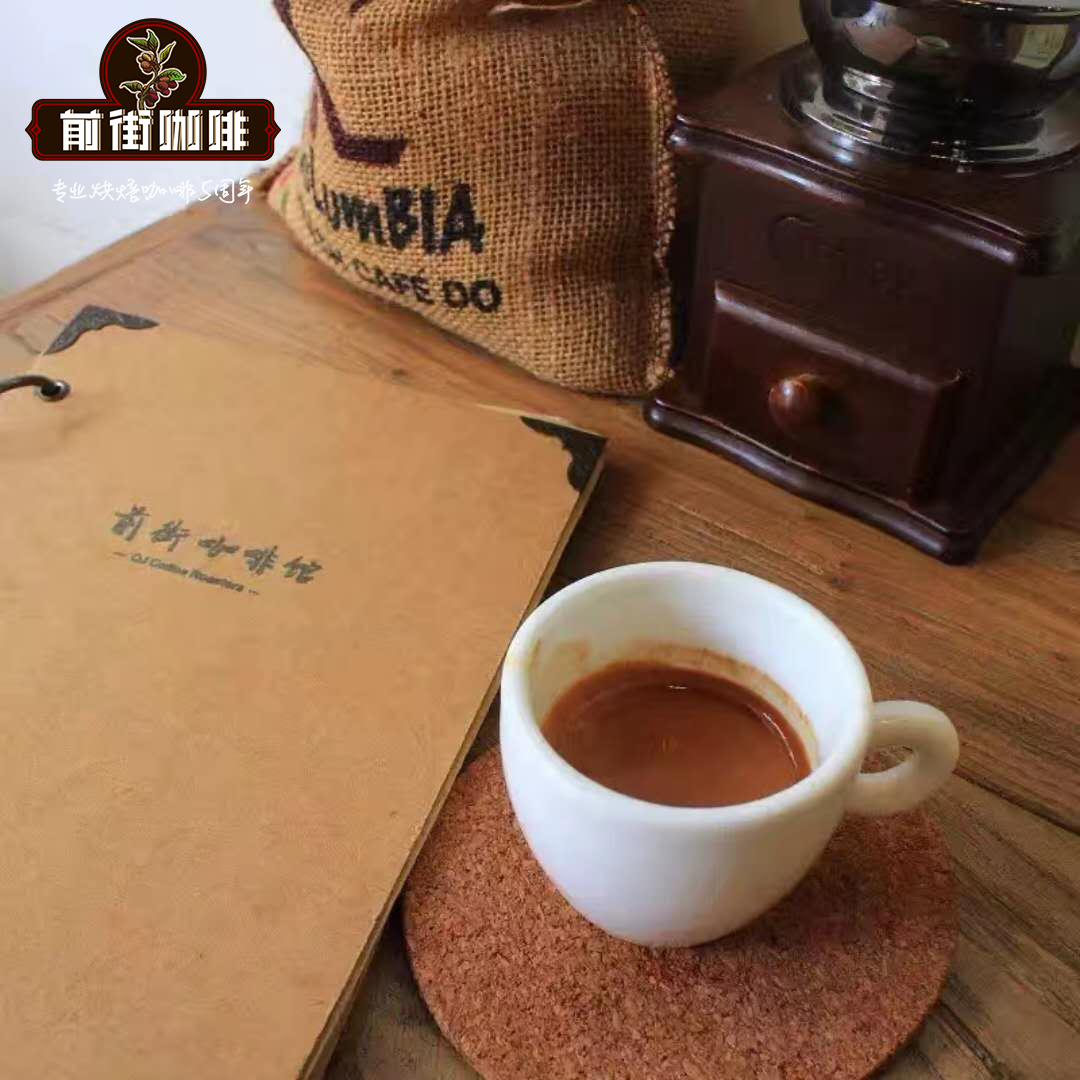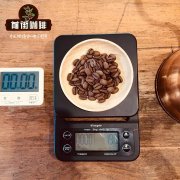Costa Rica Guanacaster coffee beans washed in the sun, what's the difference between which flavor tastes good?

Professional coffee knowledge exchange more coffee bean information please follow the coffee workshop (Wechat official account cafe_style)
Guanacaster, Costa Rica is one of the familiar coffee producing areas, and you must often see beans like the honey treatment of XX Manor / processing Plant in Costa Rica.
Speaking of which, someone may raise his hand and say, "teacher, I know!" Honey treatment is the beans treated with honey!
Cough... In fact, many people are misled by the name, honey treatment is not to add honey, but in the process of processing through the pulp fermentation, and then create a molasses-like sweetness.
Strangely enough, we often see a color in front of the Costa Rican honey treatment, with black honey, red honey, yellow honey, and white honey. What does it mean?
What kind of coffee producing area is Guanacaster, Costa Rica, and how does it develop a powerful method of treatment?
Including the secret of honey treatment color, I will tell you one by one.
Guanacaster, Costa Rica is one of the coffee producing areas familiar to coffee drinkers. It is located in the isthmus of Central America and is regulated by Pacific and Atlantic currents and sea breeze. It is a towering volcano up to 2000 meters above sea level. Coffee berries are slowly brewed in fertile volcanic ash soil and cool environment at high altitude, giving birth to coffee beans with complete and rich flavor.
At present, there are eight main producing areas in Costa Rica, namely: Guanacaste, West Valley, Central Valley, Turrialba, Orosi, Tres Rios, Tarrazu and Brunca. Costa Rica can be divided into two seasons. The dry season is from December to April, when coffee is harvested, while the wet (rainy) season is from May to November.
According to ICO, Colombia can produce about 1.6 million bags of Arabica coffee a year, which is not as good as Central American countries such as Guatemala and Honduras, but far higher in quality and price.
In the early days, most of the Costa Rican coffee beans were famous for washing coffee beans, and the processed coffee beans had elegant green apple acidity and clean flavor.
However, there is a great need for the use of water resources, which is not only expensive, but also has a great environmental impact.
In recent years, Costa Rica has made great efforts to develop honey treatment, and many micro-processing plants have been set up one after another.
The manor will harvest coffee beans with full maturity and good quality, in order to save water resources, use a pulper to remove the outer peel, use a scraper to adjust the scraping degree of the pulp, and place the peas with pectin on the so-called African scaffolding for sun exposure.
It is also necessary to maintain proper ventilation in the drying process, otherwise the failed honey treatment will easily have an uncomfortable smell of excessive fermentation.
.
The water consumption of honey treatment is only 5% of that of traditional washing plants, and it does not require huge sinks and exposure fields, and the investment required is relatively small.
Unlike the traditional washing method, the honey treatment method removes all the pulp first, but retains the right amount of pulp for fermentation.
In addition to effectively reducing the acidity of the coffee, it also makes the coffee flavor sweeter with ripe fruit and has a richer sweetness in the taste, breaking away from the limitation of traditional washed coffee beans.
The sweet-smelling "honey-treated coffee" has become the target of competition in the coffee industry in recent years, and the outstanding ones have greatly enhanced the international reputation of the estates in recent years.
Many people will wonder why there are different colors in the honey treatment of Costa Rica.
This is the more sophisticated honey treatment developed by Costa Rica in recent years. Costa Rica has introduced many advanced machines that can control the proportion of peel and pulp removal, including white honey, yellow honey, red honey and black honey treatment. the difference between them is the amount of flesh retained.
The least flesh left is the white honey, which is closest to the washing method, leaving only about 20% of the pulp, with clean flavor and bright acidity.
Followed by yellow honey (40% pulp), red honey (60% pulp), and black honey left the most pulp, about 80%, compared with other honey treatment, it is relatively close to the sun method, sweetness is more obvious, the flavor is also more yuan.
The success or failure of this technology lies in controlling the degree of residual pulp and fermentation. The more pulp remains, the sweeter the coffee beans will be after treatment, creating a different flavor.
It seems that the longer it ferments, the better it tastes, and it's not entirely true.
Because the fermentation of honey treatment is the pulp exposed state, so the fermentation speed is much faster than the sun method, if it is not handled well, the fermentation is excessive or uneven, the flesh is rich in black honey, the flavor will be too alcoholic, the taste is very uncomfortable.
Therefore, it is indeed a great knowledge to choose what kind of pulp proportion to use, but also depends on the flavor of the coffee fruit and the fermentation control technology of the processing plant.
In recent years, the development of the world treated by Guanacaster honey in Costa Rica has also made many estates shine internationally, not only bringing more foreign exchange to Costa Rica, so that coffee farmers can get better profits. it also makes the impression of Costa rica coffee more impressive, please climb another tall building.
In recent years, more and more countries have followed the example of Costa Rican honey treatment, and people are becoming more and more blessed.
Important Notice :
前街咖啡 FrontStreet Coffee has moved to new addredd:
FrontStreet Coffee Address: 315,Donghua East Road,GuangZhou
Tel:020 38364473
- Prev

A brief introduction to the manor in Guanacaster, Costa Rica, do coffee beans have any outstanding flavor?
Professional coffee knowledge exchange more coffee bean information please follow the coffee workshop (Wechat official account cafe_style) Costa Rica Guanacaster coffee taste Costa Rican coffee is usually very pure and sweet, but mellow thickness tends to be elegant. In recent years, many processing plants have begun to produce coffee with a variety of tastes and styles. Coffee has been grown in Costa Rica since the early 19th century.
- Next

Taste and flavor characteristics of Yunnan Xinzhai coffee where are the varieties of Yunnan coffee planted?
Professional coffee knowledge exchange more coffee bean information Please follow the coffee workshop (Wechat official account cafe_style) when it comes to coffee, how does it make you feel? The smell of coffee when you get up in the morning awakens the spirit of the day. And coffee, not only the taste and aroma, brings us more emotional enjoyment. Some people say it is romantic, others say it is a petty bourgeoisie. What is the standard to evaluate good coffee?
Related
- Does Rose Summer choose Blue, Green or Red? Detailed explanation of Rose Summer Coffee plots and Classification in Panamanian Jade Manor
- What is the difference between the origin, producing area, processing plant, cooperative and manor of coffee beans?
- How fine does the espresso powder fit? how to grind the espresso?
- Sca coffee roasting degree color card coffee roasting degree 8 roasting color values what do you mean?
- The practice of lattes: how to make lattes at home
- Introduction to Indonesian Fine Coffee beans-- Java Coffee producing area of Indonesian Arabica Coffee
- How much will the flavor of light and medium roasted rose summer be expressed? What baking level is rose summer suitable for?
- Introduction to the characteristics of washing, sun-drying or wet-planing coffee commonly used in Mantenin, Indonesia
- Price characteristics of Arabica Coffee Bean Starbucks introduction to Manning Coffee Bean Taste producing area Variety Manor
- What is the authentic Yega flavor? What are the flavor characteristics of the really excellent Yejasuffi coffee beans?

